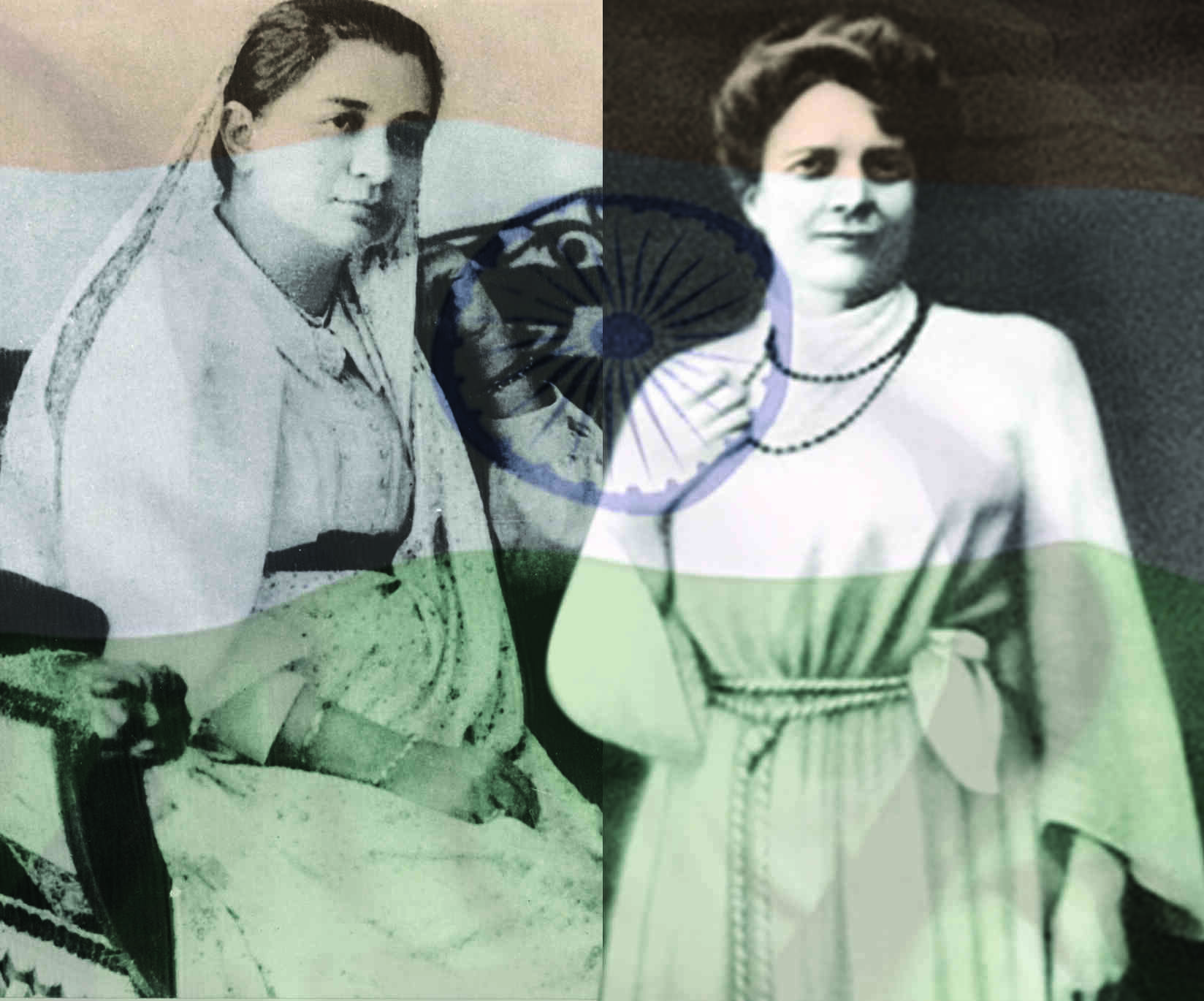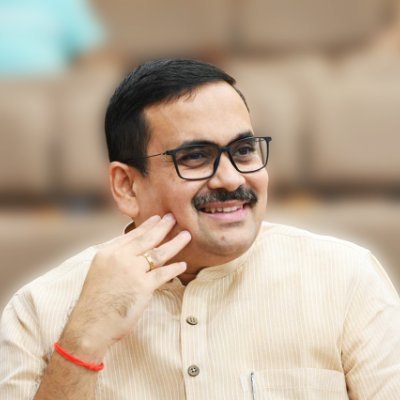As the ‘Har Ghar Tiranga’ campaign inspired and launched by Prime Minister Narendra Modi gathers an impressive fluttering speed across the country, it is natural for the mind to draw a historic link to this unique tribute being offered to the indomitable spirit of free India.
The attempts to draw up a flag of free India, or to propose a flag for India when she would have achieved her freedom was, interestingly, made by two women, one a Hinduised Irish, disciple of Swami Vivekananda, living in north Kolkata and another a Parsi revolutionary who had made Paris her perch to plan and broadcast the message of India’s freedom.
It is Sister Nivedita and Madame Bhikaji Cama that we must necessarily remember and offer our tribute during this special phase when the spirit of the Indian Tricolour is being sought to be rekindled and re-awakened in a never done before manner.
Sister Nivedita’s connection with revolutionary nationalists has been well documented and its intricate story continues to thrill and inspire people. One of the doyens of nationalist journalism, Ramananda Chattopadhyay, in whose widely read ‘Modern Review’ Nivedita often wrote, describes Nivedita as a “pronounced nationalist” for whom the “promotion of the cause of nationality” was “her mission and passion, as was women’s education.”
As early as 1905, Nivedita conceived of the need for a ‘National Flag’ as a rallying symbol for the cause of India’s emancipation. She worked on the design of a ‘National Flag’ with the ‘Vajra’ – the thunderbolt — at its centre, inspired by the example of Rishi Dadhichi, who “smilingly listened, smilingly answered, and in a moment laid himself down to die – yielding at a word the very outmost demanded from humanity.”
For Nivedita, a ‘National Flag’ ought to inspire and command Dadhichi’s selflessness. “The Selfless Man is the Thunderbolt”, she wrote, “Let us strive only for selflessness, and become the weapon in the hands of the gods.” It was India, “in all her millions, not a few Indian saints or prophets, who is called today to attain selflessness”, she argued. Nivedita’s flag embroidered in “scarlet and yellow” with the Vajra at its centre was displayed at the Congress Exhibition in 1906 and “many eminent persons, including Dr [Acharya] JC Bose, accepted this symbol and started using it.”
In 1909, when the issue of a National Flag was publicly discussed, Nivedita wrote in ‘Modern Review’ in detail on its history, need, symbolism and design. In a ‘National Flag’ she saw a deeper symbol for national unity, a rallying point for crystallising the growing urge and aspiration for freedom, an aspiration that had to be passed on from generation to generation. To Nivedita, the aura of a ‘National Flag’ was an “altar, at whose foot, whether for assault or defence, men’s lives are freely offered up.” In an inspiring description mirroring the essence of a ‘National Flag’, she wrote, “Generations come and go. New combinations arrive and vanish, but that for which the national symbol stands – that ineffable union of jana-desha-dharma for which every people fight – remains forever, simple and steadfast as Eternity, mirrored in the fugitive minds of its myriad worshippers.”
It was in August 1907, a little over 50 years after the first war of independence that Madame Bhikaji Cama who, as one of the pre-eminent historians of India’s freedom movement — RC Majumdar — describes, had “earned undying reputation as the Mother of the Indian Revolution”, represented India at the prestigious International Socialist Congress in Stuttgart held between 18 and 24 August 1907. Historian of the early nationalist movement in India, Prithwindra Mukherjee, in his seminal study ‘The Intellectual Roots of India’s Struggle for Freedom’, notes how Cama imbued with “dynamism and impetuous patriotism was a respected figure among Indian revolutionary leaders in Europe, as much as in London and in Paris.” She had also emerged as an ‘indispensable’ link between Veer Savarkar and other Indian revolutionaries and leading western political activists of that epoch.
1907 in India was the year of “turmoil and tempo”. The nationalist duumvirate of Lokmanya Tilak and Sri Aurobindo had effectively debunked the politics of petition or mendicancy, as Sri Aurobindo had termed it, Veer Savarkar in foreign soil, had started weaving the web of revolution, the mantra of “Swadeshi, Swaraj and Boycott” had spread far and wide giving rise to waves of protest, while Lord Curzon’s tenure as Viceroy had left behind a trail of disaffection and anger among the Indian public at large. 50 years after the War of 1857, and 150 years after the Battle of Plassey, India was again on the boil.
In his classic ‘India under Morley and Minto’, eminent historian MN Das describes how everyone agreed that the “old form of imperialism could not continue” and that “Imperial policies and administration required moderation.” To Lord Minto, Curzon’s successor, the latter’s “unpopularity was so great that the mere mention of his name was a “red rag to nine-tenths of the population of India.” Mere reference to Curzon’s administration, thus, writes Das, “was disagreeable to his successors, and to the people of India his memory was as unpalatable as that of the Mutiny suppression or the Battle of Plassey.” To Curzon’s mischievous public suggestion, even after he had relinquished office, that the 50th anniversary of the suppression of the “Mutiny” and the 150th year of the Battle of Plassey must be celebrated with pomp, Minto noted with alarm writing to John Morley, then Secretary of State for India that, “Anything of this sort is…utterly out of the question. I cannot imagine anyone, who has ever thought twice about it; making such a proposal…I cannot say how wrong I feel it would be to revive the memory of those times throughout India – above all, at the present moment.”
It was in the backdrop of such a general ferment in India that Madame Cama, against vehement opposition from the British contingent at Stuttgart, spoke of India’s plight under colonial subjection and also succeeded in unfurling the flag symbolising India’s freedom and her aspirations to recover herself. Her other colleagues in the Indian delegation at Stuttgart were Sardar Singh Rana from Saurashtra and Virendranath Chattopadhyay, known as Chatto to the legions of Indian revolutionaries abroad. Their overall political inspirer and instigator was the thinking revolutionary Shyamji Krishna Verma who laid the path for the message of India’s freedom struggle to percolate public spaces and intellectual citadels of the West.
At the old Stuttgart Liederhalle, venue of the Socialist Congress, Cama argued “that the continuance of British rule in India is positively disastrous and extremely injurious to the best interests of India, and [that] lovers of freedom all over the world ought to cooperate in freeing from slavery the fifth of the human race inhabiting that oppressed country…”
Madam Cama’s history sheet prepared by the Criminal Intelligence Office, recorded how she told the gathering that “thirty-five million pounds were taken annually from India without any return and in consequence people in India died of poverty.” At the “close of her speech”, the history sheet records, Cama “unfurled the Indian National Flag, tricolour in green, yellow and red with the words ‘Bande Mataram’ on the middle band…. [and] Waving the flag before them, she said she had ever hoped of seeing the republic of India, established in her life-time.”
Savarkar’s most popular biographer Dhananjay Keer notes how at the Stuttgart meet, Cama declared that “This flag is of Indian Independence. Behold it is born! It is already sanctified by the blood of martyred Indian youths!” Cama called upon the gathering to “rise and salute this flag in freeing one-fifth of the human race.” Keer writes that the “delegates rose up and saluted the flag of Indian Independence.” President of the Congress, Paul Singer, representative of the Social Democratic Party of Germany, declared “that the spirit of the resolution was approved” by the international meet. Interestingly Cama’s resolution received approbation from leading socialists of the era, such as France’s Jean Jaures, Poland’s Rosa Luxemburg, Germany’s George Bebel and Britain’s Henry H Hyndman, an active sympathiser of the cause of India’s freedom, whose book ‘The Bankruptcy of India’ (1886) had already generated waves.
Madame Cama thus became, “the first Indian” to “unfold the Indian National Flag in a foreign country before an international gathering.” From then onwards “she made it customary to unfurl the National Flag before addressing any meeting, because she said “she was in the habit of speaking under this flag.”
Both Nivedita and Cama breathed life and essence in our quest for a “National Flag” and forever etched its centrality in our struggle for freedom. The historic ‘Har Ghar Tiranga” movement is an occasion to recall and rejoice in the memory of that past.
(The views expressed are the author's own and do not necessarily reflect the position of the organisation)


